|
Welcome to Leading Matters, a new weekly post providing insight and practical guidance to help readers leverage intentional leadership and organizational culture to create more innovative, engaging, and agile organizations. We'll cover topics including personal leadership, team development and engagement, culture, and technology innovation. As a venture capital investor, former founder, and author, I have seen a lot of companies start and rebuild themselves. I've always remembered that there are two things drive organizations to reinvent themselves: fear, and vision. Now more than ever, organizations face trends that will force them to reinvent themselves. Most leaders recognize that they are confronting more new challenges than ever before. According to PwC, CEOs see the the need for reinvention driven by:
Many of these shifts are a response to intense technological change ahead: AI, quantum, biotechnology, the transition to clean energy, robotics, Web3, and the ability to harness technology to build technology. And many will create new market opportunities and ways to innovate how existing industries are composed and structured. As organizational leaders today face continuous waves of change, they will need to adapt to a new form of intentional leadership to create more innovative organizations that can anticipate, create, and adapt to change. Leading Matters is dedicated to enabling a narrative around using intentional leadership and organizational culture to help leaders develop more innovative, engaging, and agile organizations. My mission is to inspire and empower individuals at all levels to become transformative leaders, driving positive change within their organizations and beyond. Through insightful discussions, practical guidance, and a commitment to fostering more engaging and innovative environments, Leading Matters aims to catalyze the evolution of leadership for better organizations. I’ve based it on a belief that effective leadership is essential for organizational success and a force for shaping more agile and enduring companies. I invite you to join me on a journey to explore the diverse facets of leadership that truly matter in the ever-evolving landscape of work and society by subscribing to Leading Matters. Follow this link to subscribe to Leader Matters on Substack, or find Leading Matters at www.williamkilmer.com/leading-matters. Lead with purpose. WK
0 Comments
Think for a moment about a successful company and what it is you admire about it. Like many, you might start by pointing to the company’s unique and awe-inspiring products or services. Or perhaps you identified an incredibly charismatic leader who has driven the company forward to success.
When you dig a little deeper, you will likely point out what the organization does well. Take Apple, for example. We might say that we like the way they design products, their attention to detail, how well they integrate hardware and software to simplify how to use it, their incredible brand image, or how everything just comes together for a fluid customer experience. These things companies excel at are what enables them to be great companies. They are called capabilities. McKinsey defines capabilities as “anything an organization does well that drives meaningful business results.”1 This includes their skills, processes, know-how, and unique ways of using assets and resources they have developed. Too often I find that most companies, especially startups focus on product, not capabilities, as their source advantage. You can win with a better product in the short-run. But product-based advantage is fleeting. Capabilities are where companies build lasting advantage. To find your capabilities, think about the skills, processes, know-how, and unique ways of using assets and resources that will most likely help you be successful now, and in the future. They can come from many areas: Marketing, leadership, operational, logistics, go-to-market, ecosystem development, customer intimacy, data-analytics, and many more. Then, ask yourself, can you make that capability strategic? To do that ask three questions: 1. Does it drive value? Capabilities are strategic when they directly contribute to the basis of competition, improve the buying criteria for the customer, or provide distinct value. 2. Can you be industry-leading? Because capabilities are tied to the basis of competition and are driving value, the company must be able to uniquely and sustainably lead the industry in that capability. 3. Is it difficult to copy? On its own, the capability should be difficult to copy, replicate, or substitute in the long run. Leaders who think in terms of building capabilities and invest in them create multiple value creation opportunities and long-term advantage for their organization. As an exercise, sit down with your team and discuss what can make you unique and continue to compete and identify the capabilities that you can make successful no matter what future solutions you provide. You can learn more about building capabilities models in my book Transformative, available everywhere. #startups #leadership #future #success #opportunities #data #capabilities #transformative Over the last few weeks I’ve spent a lot of time talking to about a dozen startups and quite a few VC investors. And top of mind for everyone is the real state of the economy and how it will affect startups and venture investment.
Startup founders are particularly interested in how a potential economic downturn it will effect their next funding round and whether the market will slow down. It absolutely will slow down funding. In fact, no matter how the economy does, venture funding at all stages will be impacted. In fact, it’s important for founders and startups leaders to understand that even the best case scenario for venture capital is a bad scenario for startups for at least the next 6-18 months. And early stage companies need to understand it. The reasons go beyond the problems with high valuations and over commitment to startups in the last few years. That is a separate set of problems that venture firms, especially series B and later investors, will have to deal with. And while those companies may be able to grow into their previous valuations, they should have a plan to get to default alive to keep their options open. That means we will see more down rounds in the future than the currently, which is at around 5% of all rounds. The reasons for it go beyond a bad economy. In fact, we need to keep in mind that while growth is slowing, we may not enter a recession and in fact, the US Federal Reserve may take action to get us to a soft landing…maybe. Independent of this we there will be a tightening of investments by VC firms that means more difficult times for startups to fundraise. The reasons are simple. First, even the best VCs that have capital to deploy and are not attending to an overpriced portfolio are dramatically slowing down their investment pace. There are several reasons why that’s the case. For one, there is less competition from VCs that have deployed too much capital at high prices in the last few years and that are in trouble. So, they can take their time to look at deals, and they will. They will get back to their previous pace of investigating deals, issuing term sheets, and doing more due diligence. In addition, they are in a wait and see mode. You see, while multiples have dropped and every VC sees valuations that are more attractive compared to where they were in the last three years, no one is sure that we’ve reached the bottom yet. And there is little downside to waiting. Beyond that, there will also be pressure from VC limited partners to slow capital down draw downs (LPs giving money they’ve already committed to provide) by VCs to invest. Some of this comes from the lure of higher interest rates that incentivize LPs to invest in higher returns elsewhere. Those rates also mean that LPs are less likely to commit to new funds. But it also makes LPs hesitant to deploy committed capital being called down from existing funds so they can use those funds elsewhere. Add to this that while there has been a big drop in public market stocks this year, private market portfolios have been slower to devalue. With public stocks down 60% or more limited partner portfolios have shrunk overall. But their private market VC investments haven’t. In the words one limited partner, “my denominator got a lot smaller, but my venture numerator hasn’t.” For these limited partners, especially institutions, they suddenly have a much higher allocation of their fund in alternative assets such as venture without any actual increase in investments. These two factors are leading limited partners to tell their venture general partnerships to slow things down a bit. Other factors will weigh in on the slowdown as well. For example, many VCs will reserve more funds for the investments they’ve already made by limiting new investments. As a result we are seeing many notable VCs, including Sequoia, and Y Combinator issuing warnings to their portfolio companies to change their expectations and extend their runway. So how do we get out of this? It doesn’t take much imagination to figure out how things will reverse themselves and startup funding evens out:
There are a lot of “If’s” to bring things back again. And when they do they won’t go back to the normal of the last ten years, so companies need to change their approach away from growth at all costs and focus on building enduring businesses as Sequoia encourages. Until then, it’s important for startups to recognize that even if the outlook for the economy improves, it will be a tough fundraising environment for some time. William Kilmer is a venture capital investor, founder, and innovation strategist. He was formerly the CEO of two companies and was the managing director of Intel Capital Europe. He is the author of the upcoming book, Transformative: Build a Game-Changing Strategy, Retool Your Organization, and Innovate to Win which is available for pre-order in Summer 2022. For more information, visit Williamkilmer.com #startups #funding #venturecapital #VC #economy What are the two or three most important things your organization is currently working on that will make your organization successful?
How would the rest of your company fare at answering that question? This is the third article in a series I am writing on setting an effective strategy for your organization. I began the series with research showing that 95% of employees are unaware of, or do not understand, their company’s strategy. It’s a staggering number. And if your team doesn’t understand the strategy, you can be assured they aren’t focused on the right priorities to ensure its success. In the first post I discussed the importance of creating a company worldview to establish the “Why now?” behind your company and strategy that brings your team along. In the second post I explained how to define strategic goals and where you will play. Refer to them first because in this post we’ll discuss how to work on the core of your strategy: defining the strategic initiatives you need to do to accomplish the strategic objectives you set. I previously defined strategy as the way an organization aligns potentially unlimited aspirations with necessarily limited capabilities to create the best possible aspirational outcome. With your strategic goals in mind, you are going to work towards those creating a limited number of strategic initiatives that will become your “How we win” strategy. I started using the “how we win” approach to strategy early in my career at Intel Corporation. Our focus on strategic planning at every level focused on distilling our actionable strategy down to a handful of things we needed to do very well to win. We called it “How we win.” Though he had already retired during my time, our approach adhered to the philosophy of former CEO Andy Grove who once said, “The art of management lies in the capacity to select from the many activities of seemingly comparable significance the one or two or three that provide leverage well beyond the others and concentrate on them.” It’s a simple concept, but the easiest way to develop a clear strategy is to decide what few things you need to focus on to get to achieve your defined strategic objectives. While it may be more than two or three, it shouldn’t be more than five key strategic initiatives that you are going to emphasize to be effective. Remember, these initiatives are not a task list, they are what you will excel at doing in a way that creates a clear and distinct advantage for you, creates value, and provides you with the leverage you need to win with the resources you have. Their leverage makes them force multipliers that will increase your odds of success. The great mathematician Archimedes asserted, “Give me a lever long enough and a fulcrum on which to place it, and I shall move the world.” The strategic initiatives you select need to create leverage beyond your aggregate capabilities, especially if you are a startup. These strategic initiatives can come from a variety of areas. If you think about your organization as a collection of the following possible levers, those can include your:
Can you improve on any of these to help you reach your strategic objectives? Your options may be to create a certain expertise, build a platform, hire a specific team, or start a unique sales motion. In considering options for strategic initiatives you may benefit from referring to the seven strategy statics outlined in Hamilton Helmer’s book 7 Powers which explores ways organizations find enduring sources of value. Getting to “How we win.” is a team resolution of what you need to focus on, from infinite options, to win. It also involves deciding what you are not going to do. Remember that strategy is about making choices, including those things you won’t do. From the small number of initiatives you create you will later develop the tactical actions you need to take that will drive your focus to reach your strategic goals. But, staying with your initiatives, how to you get to consensus on what those strategic priorities are? And just as importantly, how do you stop putting so much effort into those things that aren’t helping you? Assuming that you are not a large corporation with an office of strategy development, it’s incumbent on you to bring your team together to develop your strategic initiatives. And while it’s tempting to create a set of top-down initiatives, you will benefit most by creating process that is broad enough to examine all options and incorporates both bottoms-up input and executive decision making. I have an exercise that will help you do just that. Making Strategic Choices: MOPS The single most effective tool that I have used to determine strategic choices is a MOPS analysis. It’s unlikely that you’ve heard of it because it’s my own creation which I’ve used with dozens of companies. MOPS is a mnemonic for a review exercise that will determine company actions and choices. It stands for: More or Move faster: What are the things you are doing today that you should double down on (more) or move faster in doing? Opportunities we are missing: What opportunities are you missing to improve your strategic position? This type of opportunity is different from the market opportunity derived from a SWOT (Strengths, Weaknesses, Opportunities, and Threats) analysis—it focuses on creating new initiatives and actions that you are not pursuing. Problems to solve: Identifies what is holding your organization back. Where are you failing or what you should improve? Stop doing: What are you doing today that you should stop or minimize? Importantly, MOPS a proven technique that will enable you to build a set of strategic initiatives you can agree on as a team. It will also encourage your leadership team bring the best input from their team members and involve them in the process in a way that increases their engagement. Importantly, the output of MOPS is more extensive than just finding your strategic initiatives, and will discuss using the full extent of that output later in this post. Team Exercise to Create Strategic Initiatives A MOPS analysis exercise uses a similar progressive review, present, refine process that I recommended for creating your worldview. I find this a popular exercise because it encourages team input as well as group discussion to get to a final result. It also adds an element of deeper team interaction that engages a larger part of your team and seeks their input in a way that will improve the quality of options and get their buy-in. Start by explaining the exercise to your leadership team and giving them an objective to report back with their own individual MOPS analysis that represents on presentation day. That analysis should include their own input into the four MOPS areas, as well as the feedback they receive from their team. Each individual member of your leadership team should meet with their own team beforehand to cultivate input for the presentation. With the objective in mind of creating three to five strategic initiatives that support the strategic goals (which they would share), they should seek input on the following questions: What is the company already doing that we should do more of or move faster? What are opportunities we should be pursuing that we are not currently to improve our advantages or strategic advantage? What problems or obstacles do we currently have that need to be resolved? What are we currently doing that we should stop in order to better focus our efforts or improve our ability to achieve our strategic objectives? After your team have had sufficient time to roll up and create their own individual MOPS analysis, plan a half day review session with an objective to bring together your leadership team to present their input. Start the session by breaking your team up into two- or three- person teams. The teams should meet together and have each person to present and vet MOPS analysis within that team. As each team member should present their list to the other team members they should then discuss and consolidate their inputs into a single presentation that represents their best collective ideas as a team. The second part of the session should involve bringing the teams together then present their team input to the larger group for discussion, focusing on taking away the highest priorities. Continue that process until you have combined all team presentations into one set of MOPS recommendations for the entire team. Similar ideas can often be aggregated into a broader categories as part of the process. It’s worth emphasizing that this should not be a comprehensive list of every idea for each category. The process should focus on creating a refined list of the highest priorities for each of the MOPS categories, arriving at no more than eight to ten potential actions in each. From this list the leadership team should identify the top three to five strategic initiatives that you will focus on to reach your strategic objectives. This is your set of “How we win” strategic initiatives. Most of your initiatives will come from the More, Opportunities, and Problems categories. As you’ve certainly noted already, the MOPS analysis is more comprehensive than just a set of potential actions to take. Through the process you have also uncovered problems to solve and things to stop doing that won’t be strategic initiatives. Importantly, you have found them through a bottoms-up process that gives voice to your team about problems and non-priorities. You can use this to solve impediments and identify where to reduce your efforts or stop doing things that don’t matter. With three to five strategic initiatives defined from your MOPS analysis, you have developed the high-level strategy for your organization. The next move is identifying the actions needed to complete them. This is the topic of the next post, which will focus on defining and creating actions. The good news is that most of the actions you will take have likely already been uncovered in the details of your MOPS analysis. In the next post we’ll discuss how to identify those specific actions and put clear objectives and time to completion around them in a way that will engage your team. We will also cover how to increase the tempo of achieving those actions and how to improve your organizations overall execution clockspeed. When done as an annual process, the MOPS analysis is a great way to identify your most important strategic initiatives and actions you need to take and, importantly, will create a sense of ownership and engagement across your organization. Feel free to drop me a message if you have any questions or comments. The key to developing an effective strategy lies in your ability to set a goal and then make logical choices which give you the best possibility of reaching your goal. Sounds easy, right?
I’ve long advocated that we make strategy far more complicated than it needs to be. There is a simpler and far more effective path that this article will outline. Strategy is about making choices. This article discusses two choices that are more critical than all others and that form the foundation of a good strategy. If you haven’t made them, your chances of making the right choices down the line are significantly reduced. Before moving on, this is the second of four articles I am posting on how to create an effective strategy. The first article focused on how to set your worldview which explains the “Why now?” behind your strategy and builds the context for making the decisions in this post. If you haven’t read it, I’d recommend you start there. Let’s start with an inconvenient truth: most organizations don’t actually have a strategy. What they often have is a proxy statement they use as strategy. Some examples might sound familiar, such as “Our strategy is to be: 1. the best provider of X products or services.” 2. the leader in X market.” 3. the dominant provider of X.” These are all aspirations. They may or may not be good, but they’re not strategies. Unfortunately, companies that develop a strategy may not be much better off than those that don’t. The authors of the book Profit From the Core found that while 90% of large enterprises they studied had comprehensive and detailed strategies, seven out of eight actually failed to achieve profitable growth. You might be wondering, “If large enterprises can’t create an effective strategy, why should I even attempt it?” I can guarantee you that the right strategy will propel your organization forward. Let’s start first with a definition of strategy. Borrowing from military historian John Lewis Gaddis, strategy is the way an organization aligns “potentially unlimited aspirations with necessarily limited capabilities” to create the best outcome possible. That is the key to strategy—to make choices that focus your aspirations on something achievable (a goal) and then build and align the resources, capabilities, and actions to reach that goal. In this article we focus on the two choices that will help you define your aspiration and that will lead you to making the right choices of how to use your resources, a topic for the next post. Defining Your Strategic Objective Defining one or more strategic objectives is the very foundation of an effective strategy. As the rabbit said in Alice in Wonderland, “If you don’t know where you’re going, any road will take you there.” The simplest way to answer define it is to ask, “What does winning look like to us?” This is the stage where leaders tend to lean into a product category, aspiring to be the dominant provider of one product or another. There are a few issues with that approach. First, it’s not inspiring to most people. Second, it also locks you into a product, not an opportunity. Third, it’s subjective. What does dominant mean? The right strategic objectives should be: 1. Aspirational. At this stage it should be a stretch and somewhat lofty. 2. Centered on the customer. This is what inspires your team. 3. Objective. Know with certainty that you’ve reached your objective. Revenue is my preferred quantitative objective—it’s simple. You can add others that indicate winning to your organization. 4. Time bound. This defines your sense of urgency and tempo. An annual delimitation has advantages, but you can pick something further out. These objectives should flow naturally from your worldview (see previous post) which will define the context for your customer and help identify opportunities for your organization. A strategic objective that defines winning can look as simple as something like this, taken and modified from a company I have worked with. Our strategic objective: Our goal is to become a $20M revenue company in 2022 by meaningfully helping customers to identify, manage, and mitigate their digital risk. You might question why I include revenue as a strategic objective. You are defining what winning looks like; the point is to create objectivity: you should be able to state with certainty if you achieved it or not. I advocate revenue is a powerful and objective, especially for startups. This strategic objective, your definition of winning, which naturally lead you to the question, “How will we do it?” But first, it’s important to define your unique position in the market—where you will choose to play. Defining Where You Will Play Next comes a critical decision: where you will play? It’s one of the most critical decisions to make, and one that few companies are willing to consider. The considerations for where to play can include focusing on a specific market, customer, geography, channel, product position, product category, and even use case. Your decision of where you will play should come from your understanding of the market the best possible playing fields. The trends, shifts, and opportunities you defined from setting your worldview should guide you to the best plays available. Where you will play matters because it can create open opportunities that you can consistently win. Redbox created a nearly $2 billion business for video rentals with a unique “where to play” strategy built on convenience of time and location. Defining where to play doesn’t limit your opportunity, instead it solidifies your opportunity by defining the playing field that you know you can win. Too often startups especially try to be all things to all customers. Their customers are spread across geographies, industries, and use cases, creating steep learning curves and dragging their ability to consistently win. Recently I met with the senior leadership who resisted this notion of where to play. To illustrate the importance of this concept we spent time talking through each of their competitors, their products, go-to-market, and what customers they were targeting. By the end of the exercise they realized that all their competitors had carved out a “where to play” position for themselves and concluded that they needed to do the same. Where to play strategies do not lock you into a niche. They give you a playing field where you will build unique capabilities and strengths to win consistently and grow your business, expanding your playing field or moving to others. Together, your choice of strategic objectives and definition of where you will play will lead you to the core, actionable decisions of your strategy: “How will we win?” In the next post we will talk about how to lead your team to create actionable strategic plays that will focus your organization on key priorities you need to win. I’ll also introduce one of the best and most insightful exercises that will help your team agree on what to do, and importantly, what to stop doing, to be successful. William Kilmer is a managing partner at C5 Capital, former CEO and managing director at Intel Capital. He is the author of the upcoming book, Transformative: Build a Game-Changing Strategy, Retool Your Organization, and Innovate to Win. For more information, visit Williamkilmer.com Research shows that 95% of employees are unaware of, or do not understand, their company’s strategy.
No better, only 21% of board members say they understand the company’s strategy. If you think this describes your organization, read on. I’ll show you the best way to engage your team in building an effective organizational strategy in four steps covered in four short articles. Be assured that organizations that don’t know how to build and communicate an effective strategy eventually fail, losing to companies that are better able to evaluate their environment and make important choices. An effective strategy is one that aligns the company behind one or more goals, focuses the team on a small number of things they must get right to win and motivates and engages all stakeholders to innovate to achieve it. Many organizations feel like they have a strategy when they don’t. More on that later… In this and the next three posts we’ll cover four key steps to get you there: 1. Creating a worldview. Setting a contextual overview with your team that comprehends the company’s environment and brings the “why now?” forward, painting the canvas for the strategy and choices you make. 2. Setting your strategic goal and playing field. Identifying your strategic objective and your field of play to clearly delineate where you play. 3. Defining strategic plays. Strategy is about making choices of what to do and not do to win. A simple exercise will get your entire team involved in that process and develop organizational focus. 4. Increasing your clockspeed. Because strategies are meant to be active, I’ll show you how to track and manage your strategy and performance and accelerate the clockspeed at which you accomplish your goals. Step One: Create a Worldview In the next article I describe what a strategy is, and what it isn’t. First, it’s important to lay the groundwork for creating a great strategy. That foundation starts with cultivating and codifying contextual awareness, something I call a worldview. A worldview is simply your organization’s unbiased description of the current operating environment and what you accept as observed truth that leads to why you are doing what you’re doing. It includes the factors that lead up to the problems faced by your customers, their needs and challenges, trends, and the opportunities they create. It leads you to define a “Why now?” that will motivate your team and open your organization to new innovation. Great leaders start with a worldview because it grounds the entire organization on how you look at the world and provides a why to your story. A worldview also gives your team the opportunity to contribute to it, overcomes biases, and provides the opportunity to challenge that view in the future as trends change. Microsoft CEO Satya Nadella, who has presided over one of the most historic company transformations, has mastered the ability to set a worldview for Microsoft. Watch him absolutely nail the Microsoft worldview here in under five minutes. https://www.microsoft.com/en-us/Investor/events/FY-2018/Satya-Build-2017-our-evolving-worldview Nadella advocates that his teams “know where the world is going” He focused his turnaround at Microsoft by creating a profound sense of Microsoft’s ability to intersect the world around them to develop solutions that customers are looking for. In Nadella’s own words, “We must always ground our mission in both the world in which we live and the future we strive to create.” If you’re a startup, setting your worldview collaboratively with your team is essential, and documenting it is fundamental to aligning your organization with an understanding of customer problems, opportunities, and challenges. Without it, many organizations believe they are on the same page as to what is happening in the world around them when they are, in fact, working under different assumptions. Start by challenging your leadership team to build a concise worldview for your organization. It can be as short as three to five bullet points or a full multi-page document. The easiest way to build your worldview is to invite your team write it with you. Explain the exercise to your senior team and your objective is to create the canvas of the market. Break the team into smaller groups of two or three people and ask them to work together to develop and present the views on the current state of the market and the trends you expect to impact it. They should include: 1. What are our basic assumptions of the market in which we play? 2. What are the trends most likely to impact us? How sizable is the impact? 3. Where are new or emerging opportunities enabled by these trends? 4. What are current threats we face? An essential tool for identifying and analyzing trends is a PESTEL analysis. PESTEL is a mnemonic covering significant trends: Political, Economic, Social, Environmental, and Technological. Give your teams time to write these out on their own and create an outline to present to the other teams. Debate what the team agrees with and they don’t to draw from the presentations a collective narrative that team agrees is your worldview. You won’t agree on everything, so collect those trends and their potential for impact that are less certain—that’s your watchlist for your team to verify and the degree of impact in the future. Recognizing contextual changes drives the creation of great opportunities. The initial impetus for the creation of Netflix 1.0, the company’s DVD mail-order business, may have come from Reed Hasting’s displeasure over a $40 video late fee. However, the real foundation for the solution came when a friend told Hastings of the coming trend of movies moving to the digital video disk, or DVD. Understanding this trend, Hastings created and tested the hypothesis that this more durable media could be mailed without damage. Hastings purchased several music CDs and shipped them to himself to prove his hypothesis. At the time DVDs sold for $20 while Blockbuster was buying VHS cassettes for $45. Hastings recognize these fundamental changes meant that he could purchase inexpensive and durable DVDs and mail them cheaply. This allowed Hastings to develop a competitive offering by using regional distribution centers to distribute the DVDs by mail. This new trend opened up a new opportunity and built the “Why now?” narrative. Building a worldview may not present a billion-dollar opportunity like Netflix, but it is effective at getting your entire team on board and ready to design your strategy for the opportunity in front of you. One CEO I worked with exemplifies an effective use of contextual awareness to identify what trends were impacting her organization, how they were affecting customers, the opportunities created, and what capabilities the company needed to build to take advantage of the opportunities. In every board meeting and company meeting, she would display that slide of assumptions which gave her team the “Why now?” and then explain the problems it created for the customer, and why her company was uniquely positioning themselves to fulfill their needs. This short exercise will unify your team together to a common vision and allow you to communicate it to the entire organization. With that in place you will be prepared to explore your own strategy including a definition of what winning means and how you will achieve it. We’ll cover that in the next post. Feel free to comment below or reach out if you have any thoughts. This article features a discussion with me on the issues cybersecurity risks facing venture capital funds. The original article can be found on the Venture Capital Journal (paywall).
It’s been 20 years since Apple released the iPod. Here’s what we can still learn from it.10/26/2021 It’s hard to believe that twenty years ago, Steve Jobs introduced the iPod to the world. Seated at the chronological beginning of Apple’s transformation, it now receives less fanfare than the later Apple innovations, but it has cemented its place as a historically significant product. Importantly, there is still much we can learn from it as a category-creating product and how transformative companies work.
You Don’t Need to Be the First Mover to Win The first lesson was that the iPod broke the myth that you must be a first mover to lead a market. In fact, I’d argue it reinforced the maxim that, whatever the market stage, it’s better to be a market transformer than a first mover. When Apple introduced the iPod in 2001, it was just one more entrant in a sea of existing Portable Media Players (PMP). Vendors such as RCA, Sony, Intel, and Diamond Multimedia with its popular Rio line had begun launching MP3 players four years before Apple and were well established in the growing market. As a late comer, it was not a revolutionary product to begin with. The first-generation iPod’s features, particularly its signature click wheel interface, improved on existing designs, and the device maintained a good balance between cost and song capacity. But it held limited market appeal as it was compatible only with Apple’s Mac OS computers. At $399 to $499, the iPod was not an overnight success, selling an estimated 25,000 units in its first year. Outcome Innovation is Key Lesson two is what actually propelled the iPod to success, and it’s because of core principle of market transformers: they create beachheads by changing customer outcomes. Changing customer outcomes involves helping the customer reach their intended goal, or solve their problem, with an accompanying set of new benefits. These new benefits flip the script for customers and the leading indicator that you’ve achieved it is that customers make their purchase decision based on a new and different set of purchase criteria. This creates a new basis of competition—the reason why a customer buys one solution over another. Apple achieved it with the launch of the iTunes Music store two years after releasing the iPod. They created a new category of personal music players by combining the iPod with the iTunes store, giving customers access to buy and download songs directly. This solved a significant problem of buying music and loading it on a portable device and unbundled music in a way that gave customers a new reason to buy. This produced a change of value by upleveling the outcome to achieve the customer goal to conveniently find and play the music they love. As a category creator, Apple quickly grew to dominate the market, and iPod sales rose fourfold the next year and fivefold in 2005. By 2006, five years after its release, the iPod accounted for 40 percent of Apple’s revenues. It also revealed a separate type of innovation that brings us to lesson three. Structural Innovation Is Self-Reinforcing Along with innovating a great customer outcome, Apple demonstrated the power of structural innovation. While outcome innovation opens the door for new entrants, structural innovation closes the door on incumbents by encouraging leaders to look at creatively changing the company’s capabilities, resources, relationships, assets, knowledge, and the industry structure required to deliver a better customer outcome. It involves actively changing how something is delivered to produce something entirely new. The power of structural innovation is in going after what incumbents do well. Apple’s convergence of media and devices started with the iPod. Using the iTunes Store, Apple created a seamless solution that allowed users to easily buy and down- load new music, creating the ideal user experience and disrupting the music player market with something that the incumbents were not prepared to provide. What Apple created was a product that was not only more valuable and differentiated, but one in which incumbents couldn’t recreate because it went against what they did well. Soon creating a platform for content became a significant differentiator for Apple that no one else could adequately replicate. It Starts with Intentionality The next lesson is that Apple created great products because Steve Jobs was a master at creating intentionality—the ability to define a product with enough vision to capture the customer feel, but open enough to enlist the organization to help define it. He was relentless and often ruthless in pursing that vision that creates something that is valuable and differentiated. Jobs had a history of using intentionality. He used it to drive Apple to develop a personal computer that would “change the world.” That was exhibited in its famous 1984 advertisement that symbolized Apple freeing the world from the oppression of the IBM Personal Computer. He used intentionality again when developing the first iPod, making it clear that the vision was to “Put 1,000 songs in your pocket.” When the iPhone was under development, the intentionality was to “Make the phone the killer app.” It’s Critical to Innovate for Market Leadership Next, Apple understood the importance of innovating for market leadership. This means not just innovating the product but innovating to win a new and larger market they helped create. It’s manifested in many ways, but here are two examples. The first is that organization has always found an advantage in focusing on the art of reduction. “Simplicity is the ultimate sophistication” was the headline of Apple’s first marketing brochure back in 1977. “It takes a lot of hard work,” CEO Steve Jobs once said, “to make something simple, to truly understand the underlying challenges and come up with elegant solutions.” When Apple launched the iPod, that philosophy of focusing on simplicity came through again. He assessed that competitors’ products were too complicated. “What made the Rio and other devices so brain dead was that they were complicated,” Jobs observed. “They had to do things like make playlists because they weren’t integrated with the jukebox software on your computer. So, by owning the iTunes software and the iPod device, that allowed us to make the computer and the device work together, and it allowed us to put the complexity in the right place.” Along with simplicity, business model innovation is a market accelerator and expander. In fact, great technology almost always comes with business model innovation. The launch of the iTunes Store was a turning point for iPod customers and Apple as a company. With iTunes, Apple provided a completely new outcome to customers that combined both devices and access to digital music. For the first time, users had a seamless way to search for, purchase, and download music directly onto their device. It also gave customers the freedom to buy individual songs instead of being forced to buy an entire album, giving customers the option to pick the music they wanted. The iTunes Store also provided Apple with an additional revenue stream beyond selling the original device, which its portable media player competitors lacked. That revenue stream, in tandem with iPod sales, was a powerful growth engine for Apple. Revenue from the iPod peaked at around $4 billion for Apple in the first quarter of 2008. Total sales from iPods reached $9.2 billion that same year, while the iTunes store brought approximately $3.3 billion in revenue. For every $3 in revenue from iPods, Apple made an additional $1 in music sales, a revenue stream that no other vendor of personal media players could achieve. In less than four years, Apple had successfully shifted a revenue stream from the music industry to add more than $3 billion to its own top line. While iTunes music sales have peaked, Apple has tapped additional sales in video, applications, and books. In 2020 Apple added an estimated $54 billion in revenue from sales of media, which has more than doubled since 2016. That is nearly six times the peak annual sales of iPods. Great Companies Kill Their Own Products Finally, we also learn from Apple that great companies know how to kill their own products. On June 29, 2007, Steve Jobs opened the iPhone launch event in San Francisco, announcing that Apple was launching three revolutionary products that day: a widescreen iPod with touch controls, a revolutionary mobile phone, and a breakthrough Internet communications device. A few minutes into the presentation, it became evident that those three products were actually just one device, the iPhone. Eventually the iPhone replaced the iPod’s functionality, as Apple Music has likely become the dominant revenue stream (Apple doesn’t break out their Apple Music revenue). Apple’s focus on the customer outcome rather than the product has enabled them to transition customers from one solution to the next by focusing on the best solution they can deliver with new customer outcomes instead of worrying about product cannibalization. The iPod set off a revolution inside of Apple, breaking them out of their reliance on the computer market and delivered multiple new products and revenue streams for the company. Importantly, it also gave us much to learn how to approach new and existing markets with game-changing innovation. William Kilmer is a venture capital investor at C5 Capital, former CEO and managing director at Intel Capital. He is the author of the upcoming book, Transformative: Build a Game-Changing Strategy, Retool Your Organization, and Innovate to Win. For more information, visit Williamkilmer.com ITSP Magazine Podcast Interview with Marco Ciappelli and Sean Martin. To listen to the episide visit the ITSP episode web page.
Summary Companies are putting more resources than ever into producing innovative solutions, yet nearly every executive expresses some level of dissatisfaction with their company's innovation performance. That's because while innovation is still critical, it's no longer enough. Episode Notes Companies are putting more resources than ever into producing innovative solutions, yet nearly every executive expresses some level of dissatisfaction with their company's innovation performance. That's because while innovation is still critical, it's no longer enough. Join us as we talk to a technological thought leader and investor, William Kilmer. Together, we explore why organizations need to step back and build a strategy that not only will produce great products, but that can transform the market. What allows a company to transform is to understand societal and cultural changes that are or are about to take place. If they can foster their teams to develop a strategy beyond being first to the market or leader in the industry but to reach, serve, and create loyalty uniquely and innovatively to customers in that market segment. All of this will likely require that the organization re-tool itself for innovation. This doesn't magically happen; teams don't just start producing something innovative. Instead, the individuals and the teams themselves become innovative. This is transformation. “Transformative companies aren’t first movers who invent new products; they’re game-changers whose category-creating solutions deliver new and better customer outcomes, altering industry structure, and radically changing and reframing existing markets.” About The Book "I wrote Transformative as a framework that will help companies build the momentum and strategy to become a game-changing organization. Behind it is the principle that companies that accept the rules of the market are condemned to live by them and limit their ability to compete to a narrow set of product features and performance. Those that open themselves to a broader view of how to innovate to win have many more options for success." Episode summary and notes are curtoesy of the ITSP Magazine Website. If you walked out the door of your organization and walked back in as “new management,” what would you change? If that’s not a question you are asking yourself, you should.
The greatest leadership challenge any organization faces is to develop the momentum and the strategy for change, even when the need for change isn’t immediately apparent. Those leaders that can conceptually walk out and come back through the door of their organization in varying conditions will thrive. Those that can’t, may not. It starts with that question of what you should do differently. It was that question started the process for one of the most transformative companies in history. Intel Corporation has been a highly successful company, reaching nearly $80 billion revenue company in 2021. But in 1984 market conditions forced the company to consider what they should do. Intel was in trouble. After nearly two decades of success, they found themselves in a battle in the market for memory Integrated Circuits (ICs). Japanese competitors, funded with low-cost debt, increased memory density and quality while building the manufacturing capacity to significantly drive down memory costs. As Andy Grove, the eventual CEO of Intel described it, he, then CEO Robert Noyce, and co-founder Gordon Moore were perplexed at what to do until they resolved to “Walk back through the door” and fix their problem as if they were the new management team. That approach led to a series of difficult decisions that led them to leave one market and totally transform another, computer CPUs. They remade the rules for what it takes to be a microprocessor company, creating a better personal computer experience for hundreds of millions of customers and leading Intel to more than 30 years of unparalleled market growth. As I have had the privilege of meeting with and working with management teams from hundreds of organizations, I have come to see that leadership teams almost universally struggle with three fundamental elements of their business. Specifically, how to:
This is understandable at the early stages of the company when an organization seeks product-market fit. However, it often leads to moving forward without a clear strategy. The result is a product that is different without being differentiated and a leadership failure to create real long-term advantage. The type of transformative change that organizations need to create today isn’t accomplished with great innovative technology alone. While product or technical innovation is essential, focusing on it exclusively will not produce the type of change that shakes up market leadership and rebalances the odds in a company’s favor. Unfortunately, most leaders don’t know where to start. So how can leaders walk out the door and come back through again with a fresh perspective on how to change? Here are three essential questions they should ask themselves that will take them down the right vectors of how to create more innovative outcomes: 1. How would we deliver something truly game-changing for our customers? Research shows companies that focus on delivering different customer outcomes create better market opportunities, shift and expand markets, and create strategic asymmetries. 2. How do we create a strategy for market leadership? Great companies create an innovate to win approach by seeking to identify and attract new customers, simplify to expand their market, creatively borrow from others, break industry rules, and create more profitable business models. 3. How do we retool our organization to improve our ability to be successful today and in the future? Asking this question acknowledges that innovative organizations are founded in strong cultures, creating company-wide intent, and developing an ability to identify and overcome challenges faster than the competition. These questions are relevant whether you are an incumbent, challenger, or new market start up. A survey of Fortune 500 CEOs found that 94% agreed that their company would need to change more in the next five years than it had in the last five.[1] My upcoming book, Transformative outlines how each organization can identify the answers to these questions and outline their path to game-changing success. Your market may not be changing as abruptly as Intel’s was in 1984, but if you’re not looking for how to create the momentum and strategy for change, someone else is. William Kilmer is a venture capital investor at C5 Capital, former CEO and managing director at Intel Capital. He is the author of the upcoming book, Transformative: Build a Game-Changing Strategy, Retool Your Organization, and Innovate to Win. For more information, visit Williamkilmer.com [1] “A Marketplace Without Boundaries? Responding to Disruption,” 18th Annual PWC CEO Survey, 2015. #innovation #culture #Intel |
AboutLeadership Matters is a blog and newsletter that provides insight and practical guidance to help readers leverage intentional leadership and organizational culture to create more innovative, engaging, and agile organizations. Archives
April 2024
Categories |
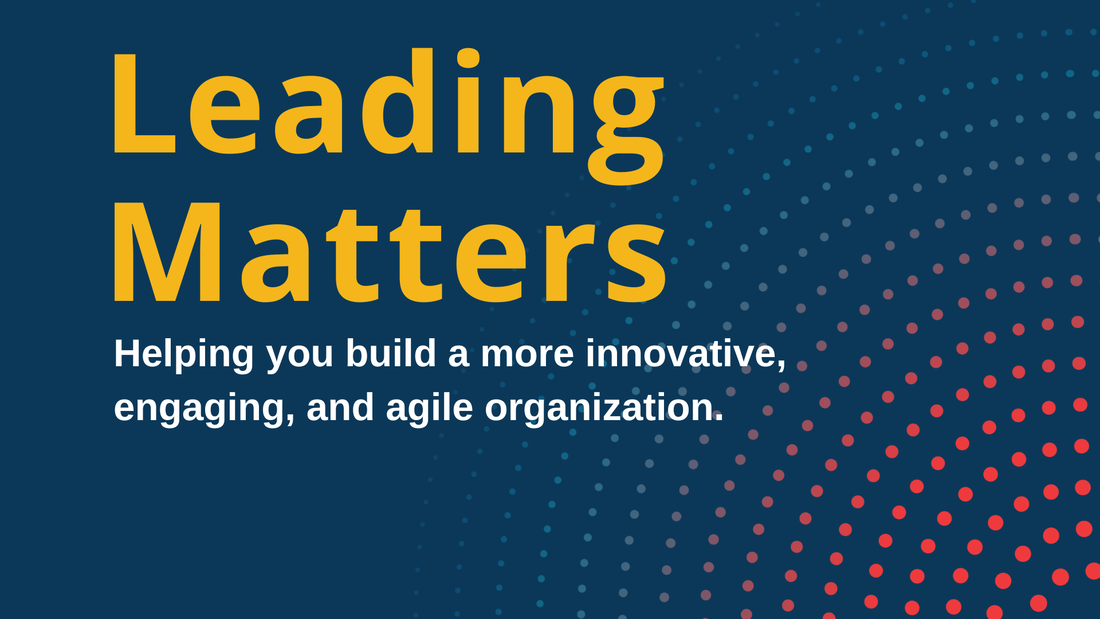


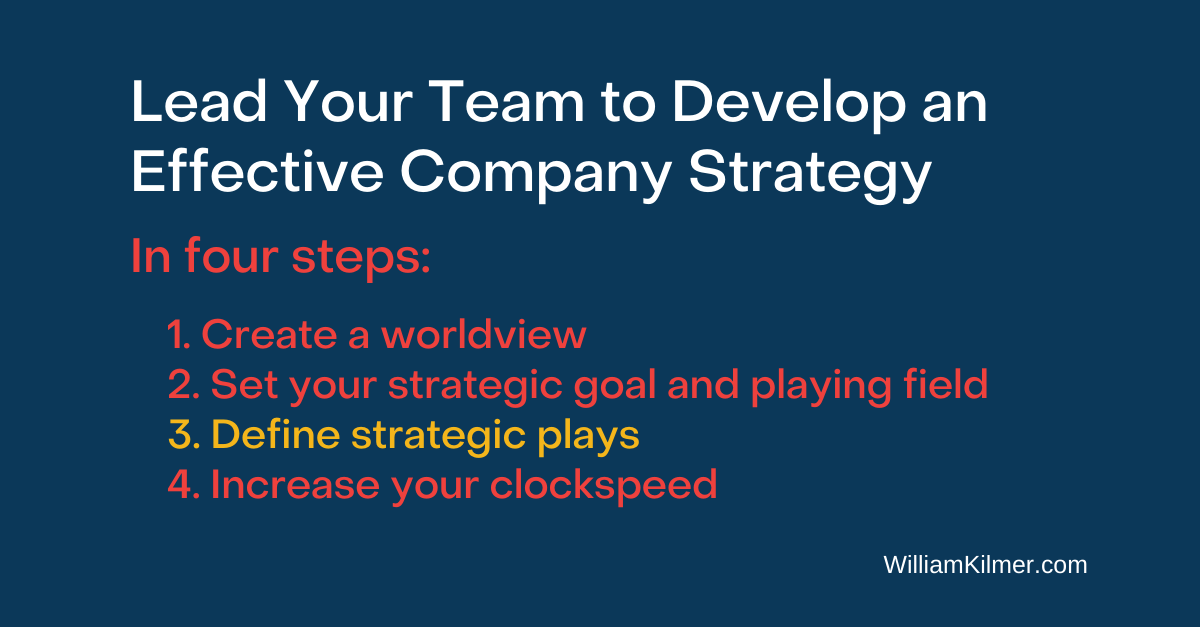
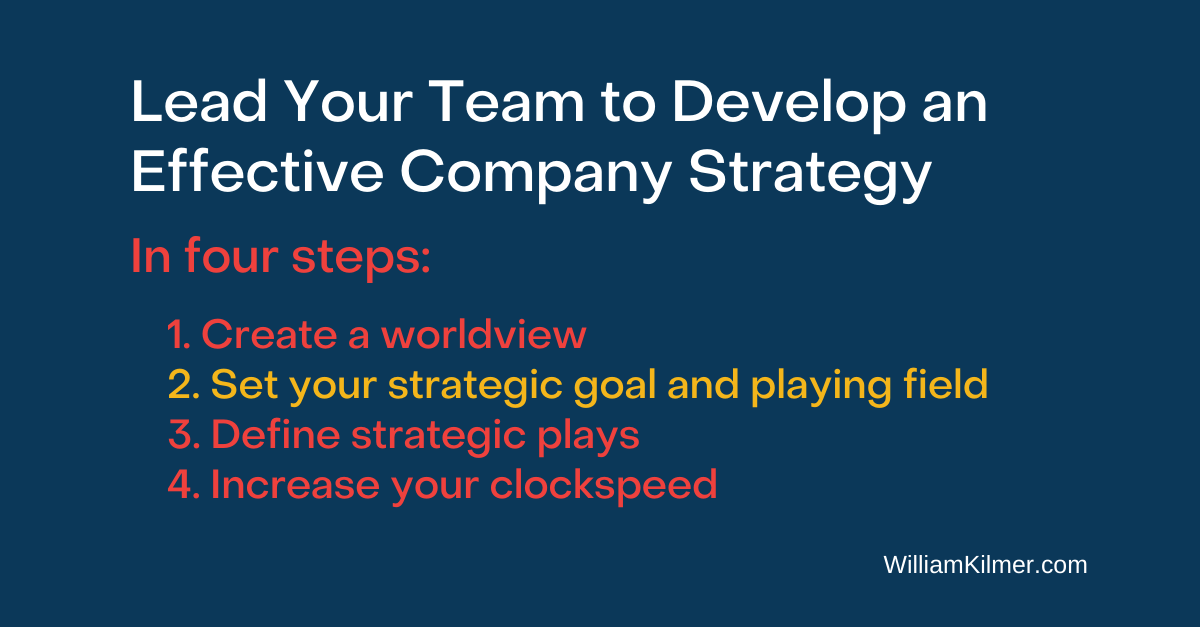
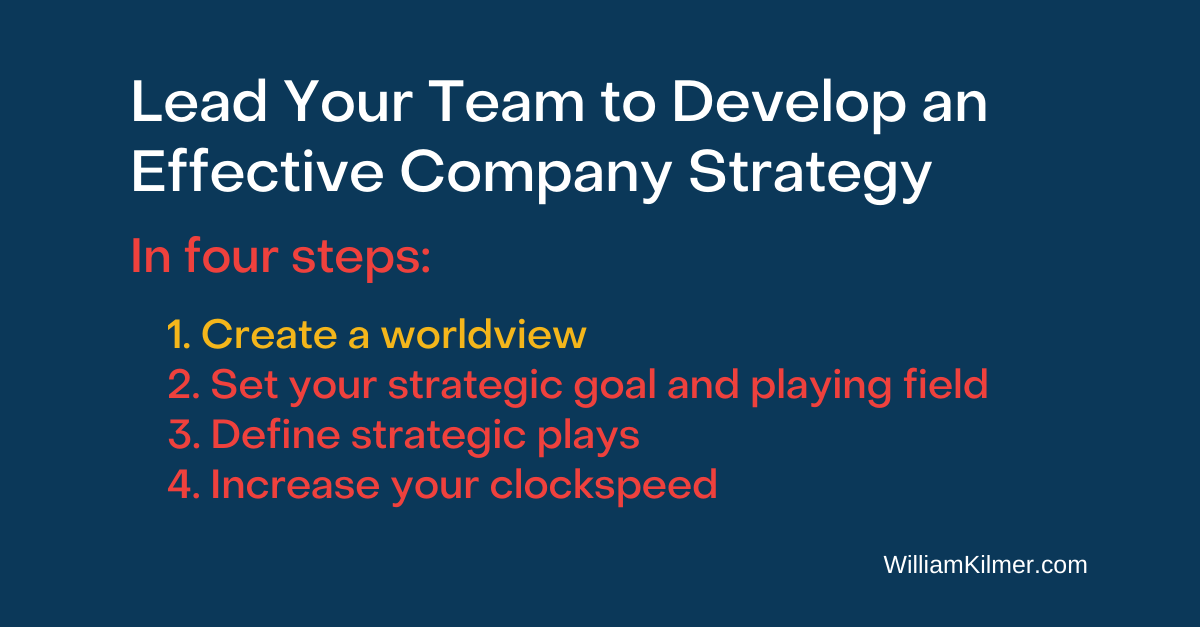


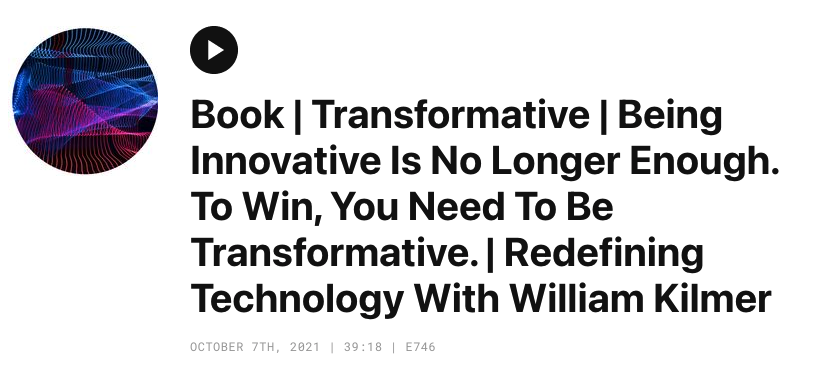
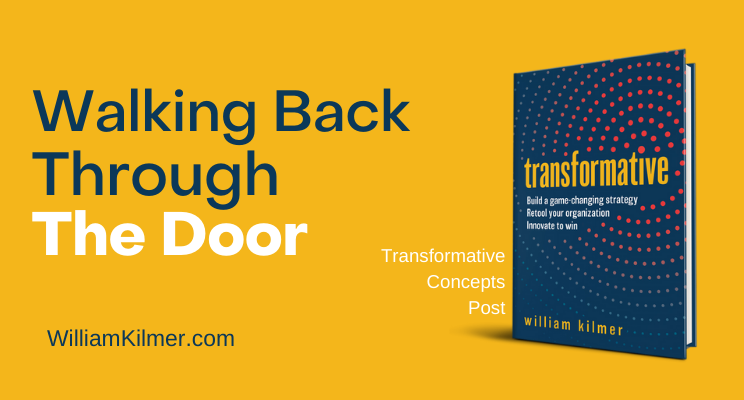
 RSS Feed
RSS Feed